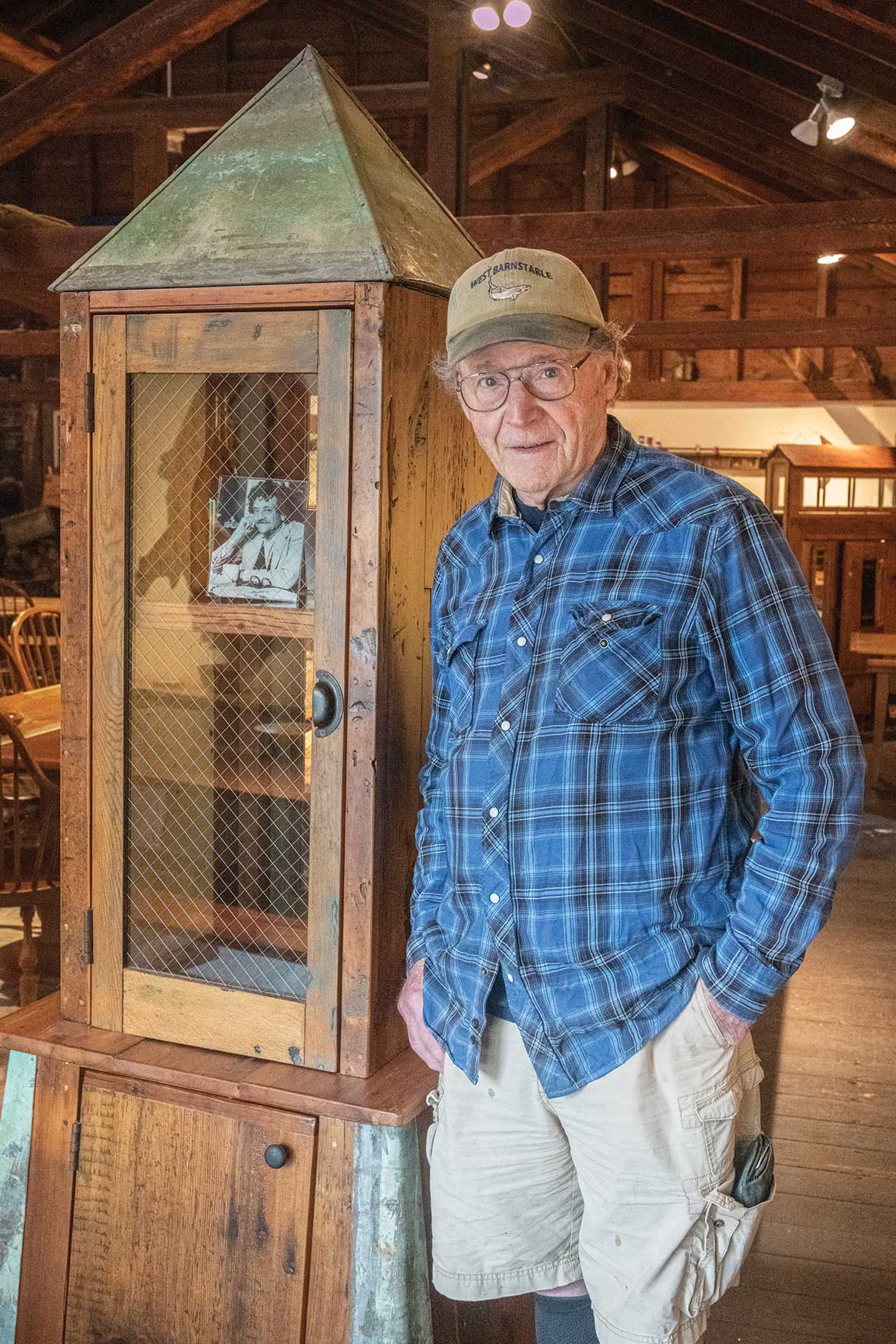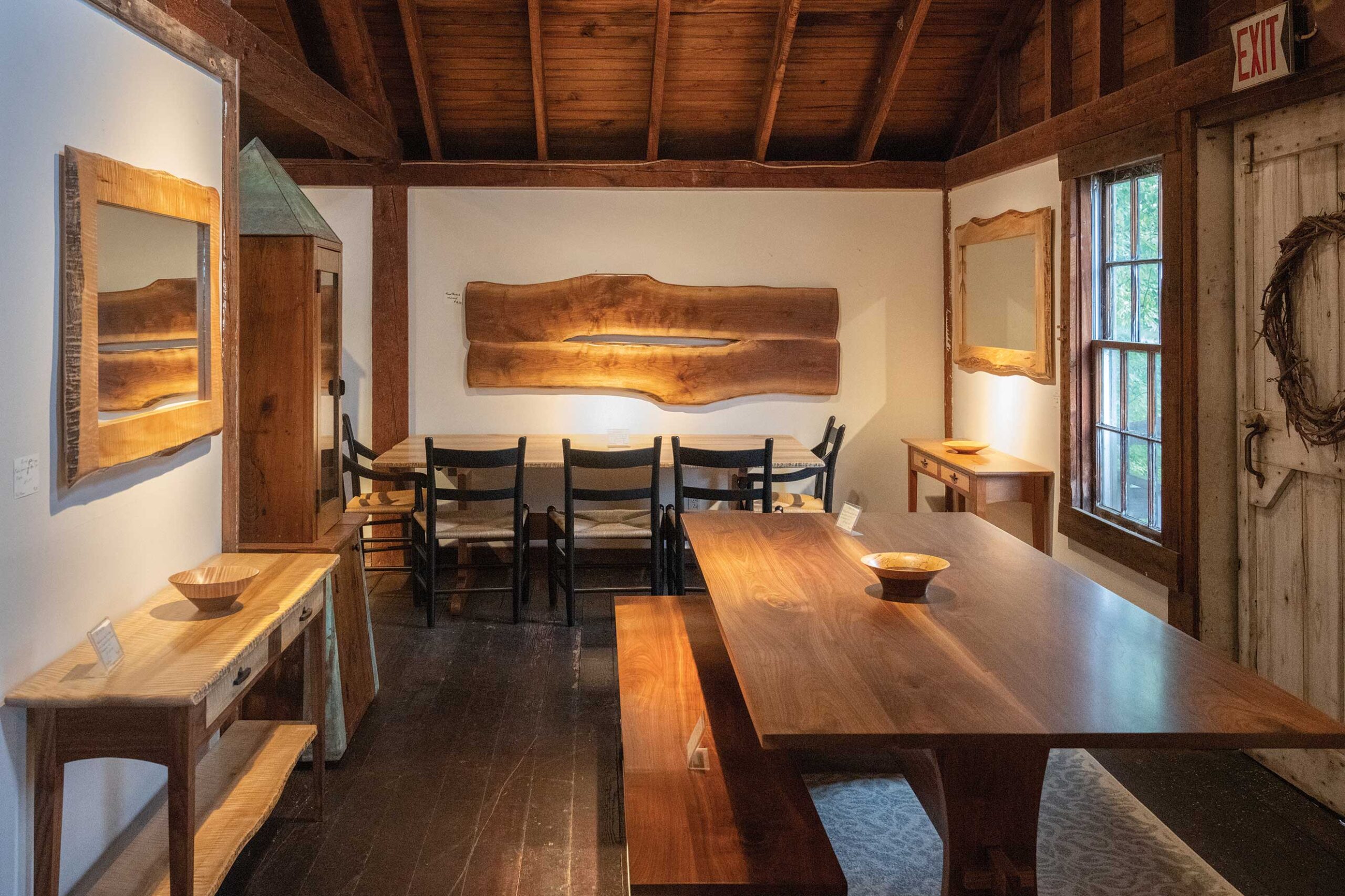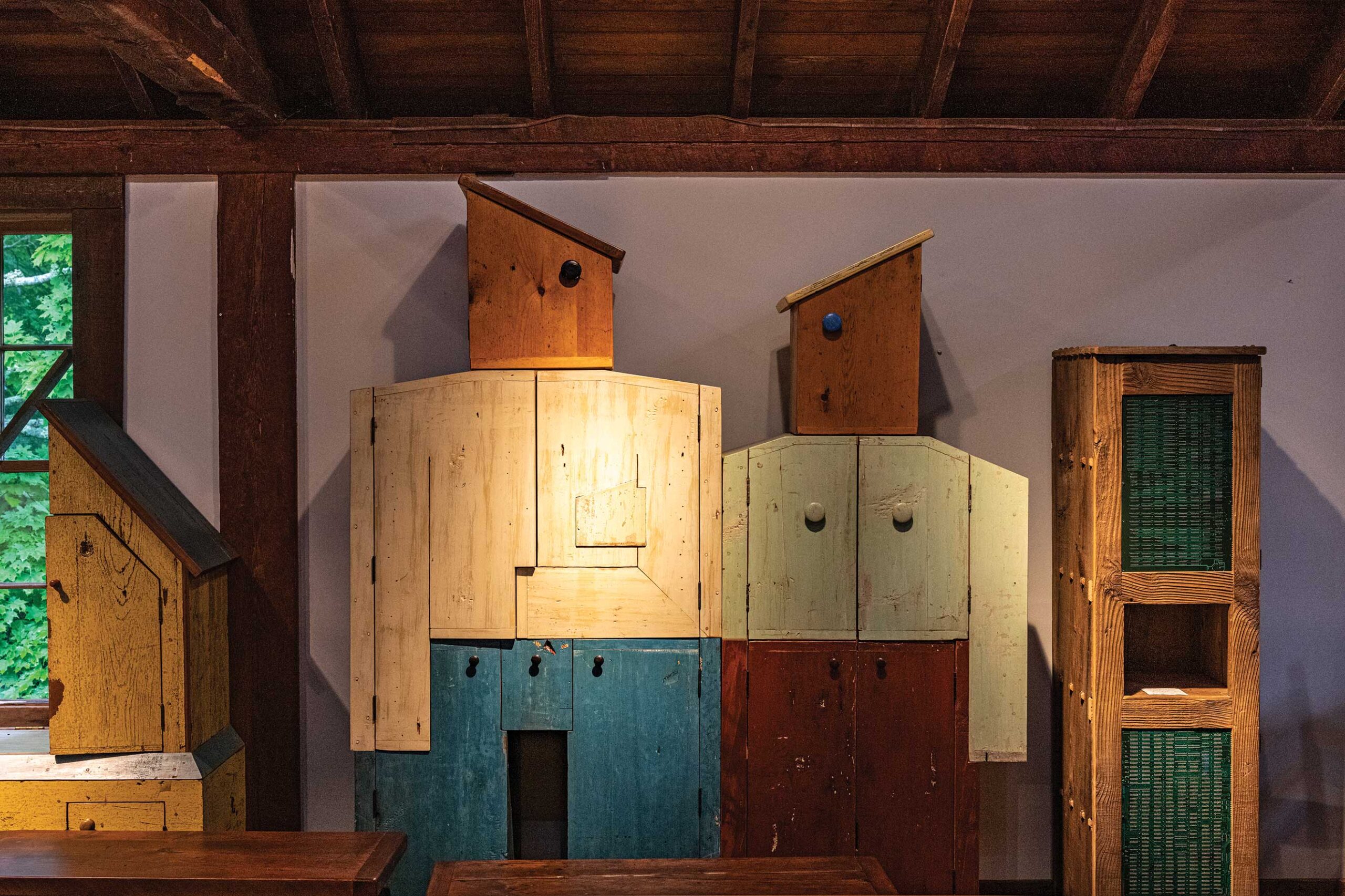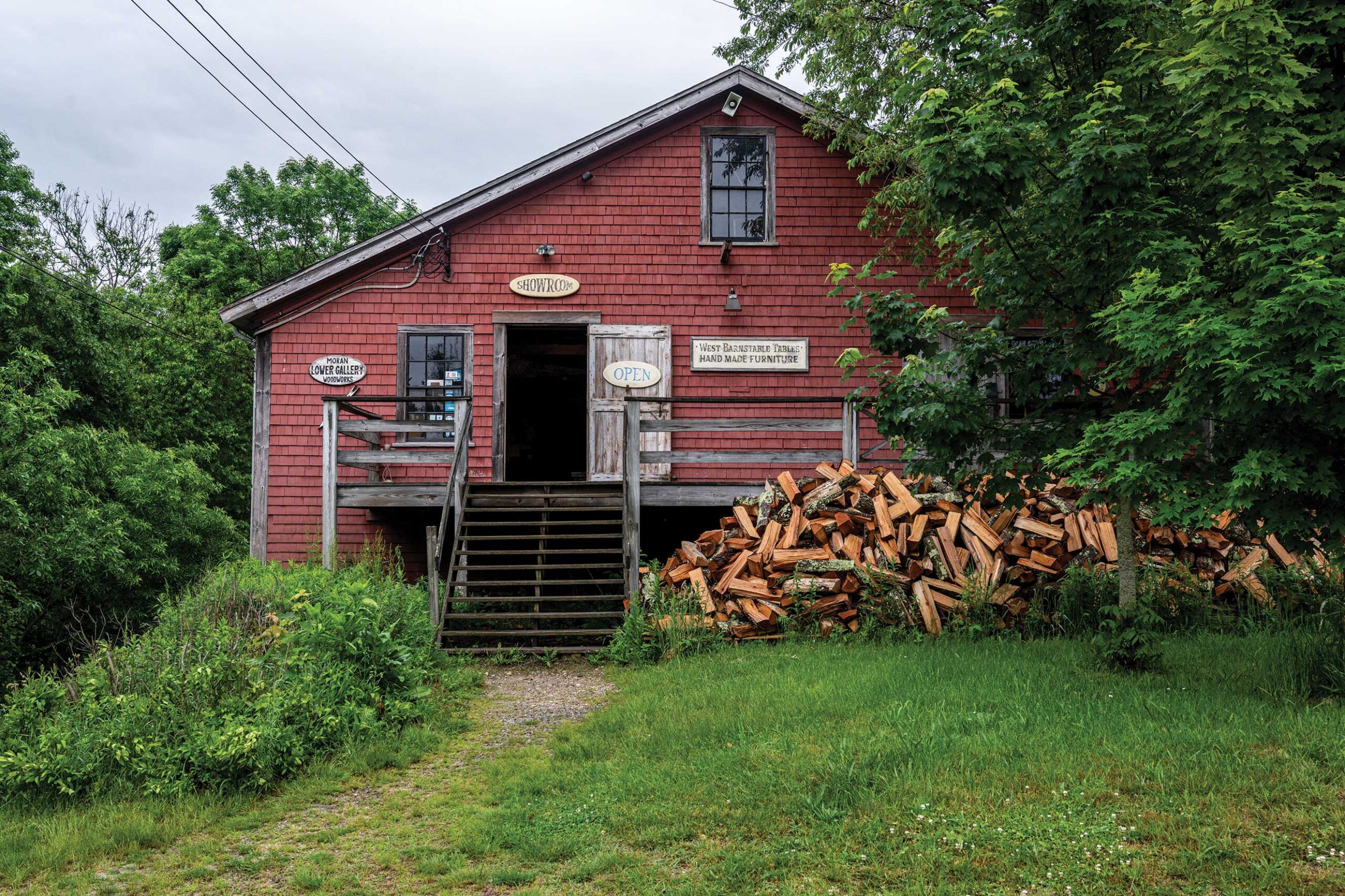by Kelly Chase
Photographs by Michael Karchmer
At 82 years old, Dick Kiusalas of West Barnstable Tables is still working and doesn’t plan on stopping anytime soon. “My work makes me want to get out of bed every morning,” he says. “I don’t understand what retirement is about.” In 1970, Kiusalas started his company, West Barnstable Tables, with his then-business partner Steve Whittlesey. “We wanted to create really unusual studio furniture,” he says. That’s exactly what they did and what Kiusalas has continued to do for fifty years.
Since its founding, West Barnstable Tables has evolved, and today Kiusalas works with a number of other artists and craftsmen out of his 1920s cranberry-processing barn. Using antique woods, such as northern red pine, eastern white pine, American chestnut, and oak, and also new hardwoods like cherry, black walnut, and tiger maple, the team at West Barnstable Tables work through commissions or creative inspiration to design and build tables, hutches, and other heirloom quality furniture by hand.


As his company’s anniversary approaches, we asked Kiusalas a few questions about his business:
How did you get started in the business 50 years ago?
I was an advertising manager for a few weekly newspapers in Connecticut. Then I got a chance to come down to the Cape and do the same job and I thought that would be great. I really didn’t enjoy the deadlines. I enjoyed the creative aspect of the work—the design, copywriting, and photography, but I really wanted to do something new, something with my hands.
My father-in-law got a pile of wood, old chestnut, and I made a dining table out of it. I received a number of compliments because of its unusual design and character. My neighbor was Stephen Whittlesey who wasn’t happy with his job either. He had a master’s in fine arts, and he decided to join me to start West Barnstable Tables. We started making furniture and moved into the cranberry-processing barn in 1976.
Where do you get your materials?
In the beginning, we’d find a lot of our wood. When they were taking down the telephone poles along the Cape Cod Railroad, we used the cross pieces with chestnut and some beams from an old building. I used to tear down buildings and boats and anything made of wood. I can’t do that anymore, so I buy my wood from people who salvage wood from other buildings. We work with old wood, which is my favorite, like northern red pine, eastern white pine, American chestnut and oak. But we also have craftsmen here who work with new hardwoods such as cherry, black walnut, box elder, butternut, tiger maple, and bird’s eye maple.


What is it about working with old salvaged wood?
I enjoy working with old salvaged wood because of the color and patina from years of use in another life. Over time, because of oxidation, antique wood changes color, and it’s beautiful and really can’t be replicated by people. I also find inspiration from the wood’s previous purpose; whether it was salvaged from an old house barn or a boat, its shape, color, and distress of the wood help me decide what I’ll create.
Any great stories about where your materials came from?
I’ve worked with antique pine salvaged from Kurt Vonnegut’s study. His daughter and her husband, who remodels and builds homes, came in and asked for some antique oak. He said he would trade me for wood that came out of Vonnegut’s study here in Barnstable. I made a free-standing cupboard on wheels, and I called it “Dr. Hoenikker’s Cupboard for Ice-9.” I thought it was apropos considering he wrote Cat’s Cradle right next to this wood.
I’ve also worked with wood salvaged from Edward Gorey’s barn collection. So many of these pieces come with stories, and when I know the story, I try to build whatever I’m going to build while thinking of the previous owners and what they’d approve of.
Outside of the shop, what do you enjoy about life on the Cape?
I just love it here. I moved so many times in my youth, so when I came to the Cape, I found a place that I loved, and I stayed. I love the beaches and ocean and quahogs. It’s a great place to live. It’s fun, plus it’s an art community and that helps my furniture business.
West WEST BARNSTABLE TABLES

